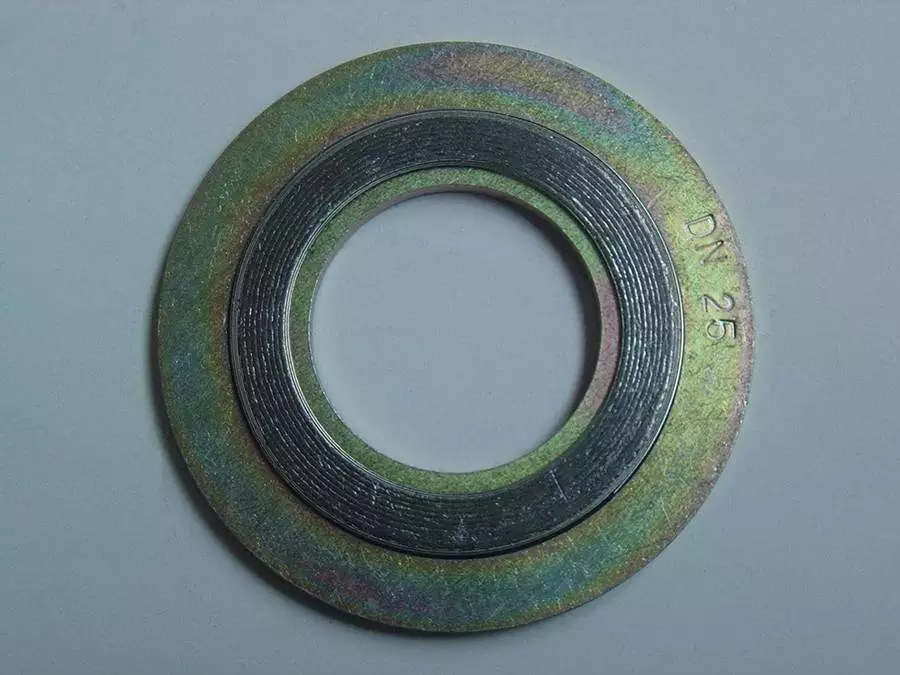Special Installation Requirements of Gaskets
Posted: 06/22/2017 02:53:50 Hits: 33
The Gasket is a kind of sealing spare part which is used for fluid transportation of machinery, equipment and pipelines. Gaskets can be divided into metal gaskets and nonmetal gaskets based on materials. Metal gaskets include copper gaskets, stainless steel gaskets, iron gaskets and aluminum gaskets. Nonmetal gaskets include asbestos gaskets, non-asbestos gaskets, paper gaskets and rubber gaskets.
1. When we install spiral wound gaskets which match with flanges with raised faces, we should ensure that the gaskets and the pipes have the same concentric circles. Generally, we adopt the outer rings connecting with the inner surfaces of bolts to fix the positions of both gaskets and pipes, and they should not deviate from the gaskets and pipes' centers. When we install the basic spiral wound gaskets of flange sealing surfaces with tongue and groove faces, the gaskets should have close contact with the tongue and groove faces.
2. When we install metallic jacket gaskets with relatively narrow length, we need to place steel plates with a certain thickness at the outward surface of the gaskets. And then press the flanges tightly so as to prevent the opening of metal housings' connection ends, resulting in damages of metallic jacket gaskets due to the packing in the metal gaskets being pressed.
3. When the operating temperature of flanges is higher than 200 ℃, we should apply sealant between flange sealing surfaces and the gaskets in order to prevent the sintering of gaskets and flange sealing surfaces at high temperature, which can cause trouble to maintenance and replacement of gaskets.
4. When the sealing surfaces are not even, we can apply sealant on the sealing surfaces and then install the gaskets. Sealant is composed of manganese dioxides, red leads, graphite powders and stewed linseed oil (dry oil). We can choose appropriate liquid sealants according to the conditions of sealing media, working temperature and medium pressure.
5. For the installation of octagonal metal gaskets, when the metal gaskets and the processing of flange sealing grooves are not ideal, we can make them attached to each other closely by grinding pastes and matching parts. For metal gaskets with large diameters, we can use sealant to fill up the tiny unevenness of the metal surfaces due to the difficulty of grinding pastes and matching parts.
1. When we install spiral wound gaskets which match with flanges with raised faces, we should ensure that the gaskets and the pipes have the same concentric circles. Generally, we adopt the outer rings connecting with the inner surfaces of bolts to fix the positions of both gaskets and pipes, and they should not deviate from the gaskets and pipes' centers. When we install the basic spiral wound gaskets of flange sealing surfaces with tongue and groove faces, the gaskets should have close contact with the tongue and groove faces.
2. When we install metallic jacket gaskets with relatively narrow length, we need to place steel plates with a certain thickness at the outward surface of the gaskets. And then press the flanges tightly so as to prevent the opening of metal housings' connection ends, resulting in damages of metallic jacket gaskets due to the packing in the metal gaskets being pressed.
3. When the operating temperature of flanges is higher than 200 ℃, we should apply sealant between flange sealing surfaces and the gaskets in order to prevent the sintering of gaskets and flange sealing surfaces at high temperature, which can cause trouble to maintenance and replacement of gaskets.
4. When the sealing surfaces are not even, we can apply sealant on the sealing surfaces and then install the gaskets. Sealant is composed of manganese dioxides, red leads, graphite powders and stewed linseed oil (dry oil). We can choose appropriate liquid sealants according to the conditions of sealing media, working temperature and medium pressure.
5. For the installation of octagonal metal gaskets, when the metal gaskets and the processing of flange sealing grooves are not ideal, we can make them attached to each other closely by grinding pastes and matching parts. For metal gaskets with large diameters, we can use sealant to fill up the tiny unevenness of the metal surfaces due to the difficulty of grinding pastes and matching parts.

Post URL: https://www.landeepipefitting.com/special-installation-requirements-of-gaskets.html
Landee is a professional industrial pipe fitting manufacturer and be well accepted by customers all over the world, we has been producing Pipe Fitting for a variety of applications since 1985. welcome to access our website: https://www.landeepipefitting.com.
Previous: A Simple Introduction of Pipe joints
Next: Tapping Processes of Stainless Steel Pipe Fittings' Internal Threads
Next: Tapping Processes of Stainless Steel Pipe Fittings' Internal Threads
